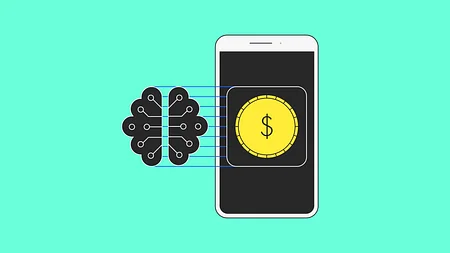Buy Now Pay Later: Love it or hate it, you can’t ignore it

Buy Now Pay Later (BNPL) is one of the hottest trends in fintech. The concept of 0% finance has been around for decades, but it’s caught fire in the last 3 years with new market entrants like Affirm, Afterpay and Klarna transforming how this works for consumers in an e-commerce setting.
This is taken from our Unfiltered newsletter. Subscribe now for a no BS, uncensored analysis of fintech news and hot topics delivered to your inbox each fortnight.
Having 30 days to try before you buy can be helpful, and merchants enjoy an increase in conversion at checkout. So far, so good. But as regulators begin to look closer at BNPL, can you trust it? And should you?
There's a lot to unpack here:
- How BNPL makes money
- The rise of e-commerce and the pandemic
- The consumer case for BNPL
- The consumer case against BNPL
- My unfiltered opinion

How BNPL makes money
BNPL often simply charges an interest rate, but the merchant fee discount is much more interesting. The merchant discounts the product to cover the risk. But why would a merchant discount their items? Well, in the eyes of the consumer, they haven’t.
BNPL has proven incredibly effective at increasing conversion at checkout. Klarna reports between 25-30% increased conversion at checkout when BNPL is an option, and Affirm claims businesses will see a 20% boost in repeat purchases.
And BNPL providers often claim much higher repeat spend with merchants that offer it. Companies like Klarna do more than just offer a payment choice - they partner with companies like H&M or ASOS to build loyalty programs and optimise payment flows and journeys.
A lot of bankers are suspicious of this new type of lender, but BNPL lender Afterpay has an average of 3% loans falling into losses. Affirm’s CEO claims that almost all loans are paid back on time and Klarna comes in a little higher at ~5% losses.
Part of the attraction to these loans is that they’re almost one click. These providers are able to offer a slick lending experience by working with alternative sources of data and building up their risk model over millions of purchases. A “soft” credit check uses less data from a credit bureau, but creates a better customer experience.
The rise of e-commerce and the pandemic
We’re all well aware now that e-commerce increased massively during the pandemic, jumping from ~20% of all commerce to ~30-40% of all commerce. Although this was a pre-existing trend, BNPL companies have proven very successful throughout this shift.
For example, Affirm in its S1 filing saw its revenues increase from $138m in Q1 to $153m in Q2, to $174m in Q3. It reached its first-ever profit of $34.8m in Q3 2020.
Part of the attraction to these loans is that they’re almost one click.
The consumer case for 😇
In principle, getting the things you want for the same price but spreading the cost over three to 12 months is a good outcome for the consumer.
This model also creates another benefit: in the age of e-commerce, returns can be painful, so commitment to spend is often held back by the psychological barrier “ahh shit, what if I have to send this back?”
BNPL effectively functions as a way to manage a trial period that removes the risk for the consumer. Many merchants offer free returns policies, confident in the knowledge that the overall sales increase is higher than the cost of managing the returns.
Often, services like Klarna offer an app that allows you the consumer to have visibility of your BNPL purchases, manage returns, rewards and more.
Much of the credit card business model is predicated on you not paying off the whole amount every month. Compared to credit cards, BNPL can be cheaper (if the consumer pays on time) and has less potential to become expensive long-term debt.
The consumer case against 😈
The problem with one-click loans that appear to be 0% is it’s not always obvious to the consumer that they’ve just bought a lending product. The type of user experience pattern that removes friction and makes you more likely to buy is also one that needs to hide the small print.
Is Klarna checking that a customer can afford to take on the loan? In the past year, it's written off around 5% of its lending as losses, according to its annual report. This number is fairly high for the wider lending industry and suggests that it could be less responsible than traditional credit cards or loans.
By not paying for something today but “paying later”, the consumer may be more likely to purchase a product. Klarna’s own reports suggest at least a 30% increase in sales with a “Pay later” option.
This is all pretty discouraging. But there’s also a risk that consumers are being encouraged to take on more debt that they can’t afford, and that they may not have recognised as a debt in the first place.
BNPL effectively functions as a way to manage a trial period that removes the risk for the consumer.
My unfiltered opinion
If a consumer doesn’t know they’ve taken out a loan they can’t afford because they were encouraged to take on this debt (that they didn’t even realise was debt) - that sucks.
If they’re then hit with a series of fees for falling into arrears, that really sucks.
But we have to find the line here.
There’s a big difference between a vulnerable customer that didn’t know they were taking on debt and, well, everyone else.
At it’s best - and for the vast majority of consumers - BNPL is a convenient solution to manage delivery risk, try before you buy, and smooth out payments.
The regulators are already looking closely at the BNPL lenders and no doubt there will be a response or rule created in many parts of the world. I just really hope the answer isn’t to push consumers towards dense legal terms and conditions pages. We can do so much better.
If regulators and the providers work together, we might be able to get to better outcomes for consumers and merchants without just forcing wordy legal T&Cs as the cure-all.
BNPL providers are masters of great checkout experiences. Putting up barriers in user experience that may marginally decrease conversion or sales but really help a consumer understand the choice they’re making is something that fintech has become quite good at. Crowdfunding platform Seedrs, for example, makes you take a short quiz before you become an investor.
We get a bit snooty about debt and lending products in fintech land, but ultimately, they’re not always a bad thing.
Please note the content in this blog is the author's opinion.



